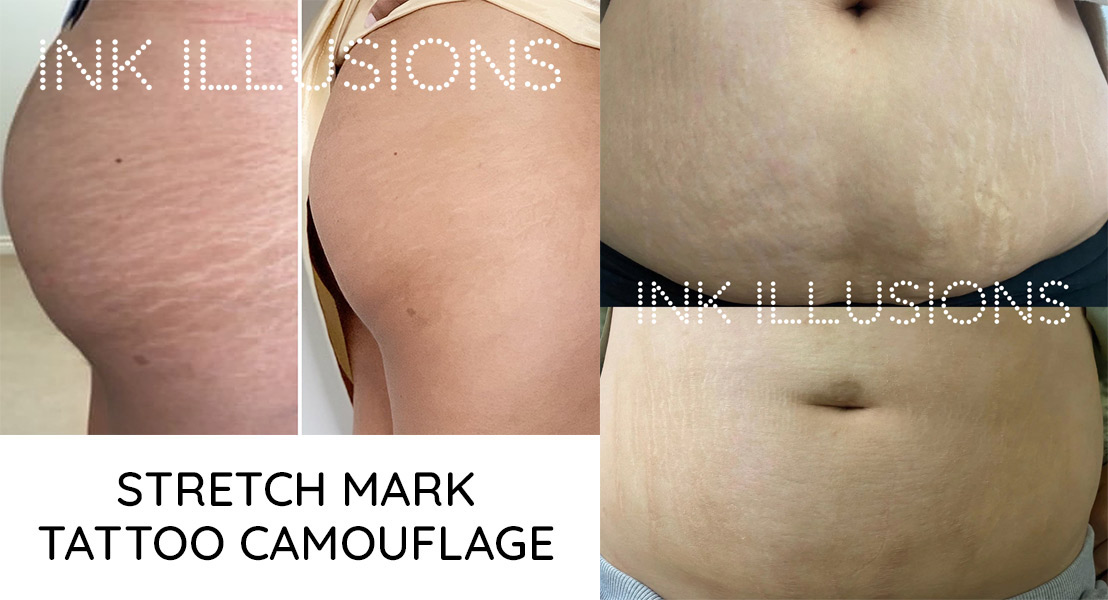As a permanent makeup artist, should I tattoo stretch marks?

Stretch marks are a constant debate among artists.
If an artist is willing to work on stretch marks, they must have a detailed discussion with their clients about the benefits versus the risks.
You must have the conversation about winter skin versus summer skin and how often this area be exposed. The skin may be exposed while wearing a bathing suit, actual clothing or not at all. Usually skin is camouflaged when it is its natural colour, unless someone lives in a place where it is always sunny, so they constantly have a tan (lucky so and so’s!).
As we know, the area that has been treated will not tan due to the pigment in the skin. Therefore, after being exposed to the sun, the stretch marks will become more visible again, due to the contrast in more tanned skin compared to the colour your tattooed with. It will still not be as obvious as before they had the tattoo ink. The sun can fade tattoo ink, but it won’t change the colour. They should wear sunblock to preserve the ink.
Stretch marks mean the skin has been damaged, an injury has actually occurred and the melanin production has been disrupted. It is not normal skin and behaves unpredictably and not in the same way as healthy skin.
It is often a good choice to try to microneedle or MCA needle that area first. This way you can see if you can stimulate any natural melanin production. If this works this is usually your best option without having to resort to ink.
Titanium aging in the skin isn’t always a good outcome – this is the biggest risk. Many artists refer to it as looking like cottage cheese. The more titanium that is implanted, the worse it will age. This is especially true when implanting titanium in areas like underneath the eyes where the skin is very thin – which we definitely do not recommend. The same is true when doing any medical tattooing on scars also – the ink is always going to age in the same way, regardless of whether it is stretch marks you are treating or not. We know that camouflaging regular injury or burns scars it a very popular treatment and isn’t so controversial!
Ink may age better in areas of the skin where stretch marks are present, as the dermis is generally thicker in these areas. Much of the way that ink ages depends on the amount of titanium that was implanted, the technique that was used and the artist abilities to implant it properly. The depth needs to be correct and very light skin types should not be treated, as the white (titanium dioxide) amount is too much and skin too transparent – so more chance of the cottage cheese result at some point in the future. This isn’t necessarily going to happen, but it is a risk.
We are very lucky in the PMU industry – the quality of our pigments have greatly improved over the last few years. This is due to innovation and what we have learned from the techniques we have used previously. However, titanium dioxide is still titanium dioxide, whether it is in semi-permanent or permanent inks – there is no difference to this ingredient. It is the largest molecule and will remain the largest molecule that we implant into the skin. The results of camouflage come from the size of the titanium molecule versus the quality of the molecule in general.
The difference with treating stretch marks compared to other scars, is the size of the area being treated. Generally the area that you’re treating when you treat other scars is much smaller. The area covered by stretch marks can be enormous in comparison to other scars. Also, stretch marks can be in multiple areas of the body such as the abdomen, the back, the arms and other places.
The injury in a stretch mark is also different compared to scars. The stretch mark injury is simply because the skin has been torn apart, or simply stretched out. An injury with a scar, the skins healing process was disrupted and scar tissue was formed above the injury. If that scar tissue is removed, there is generally healthy tissue underneath. So, as explained previously, we don’t know how someone’s skin will respond to this treatment and it is always necessary to do a small test area and leave it to heal first. As new inks have only just come on to the market, only time will tell if they are more stable as the manufacturers claim.
Tattooing stretch marks is definitely a decision that individual artists have to make based on this information. Having the correct training will minimise the risk of bad results – learning when to say no to a client if they are not suitable. Other methods such as MCA dry needling and microneedling can help the clients try to improve the appearance of stretch marks, before resorting to ink. Darker skin types can be treated more successfully with stretch mark tattoo camouflage techniques, due to less titanium dioxide content in the inks used.

